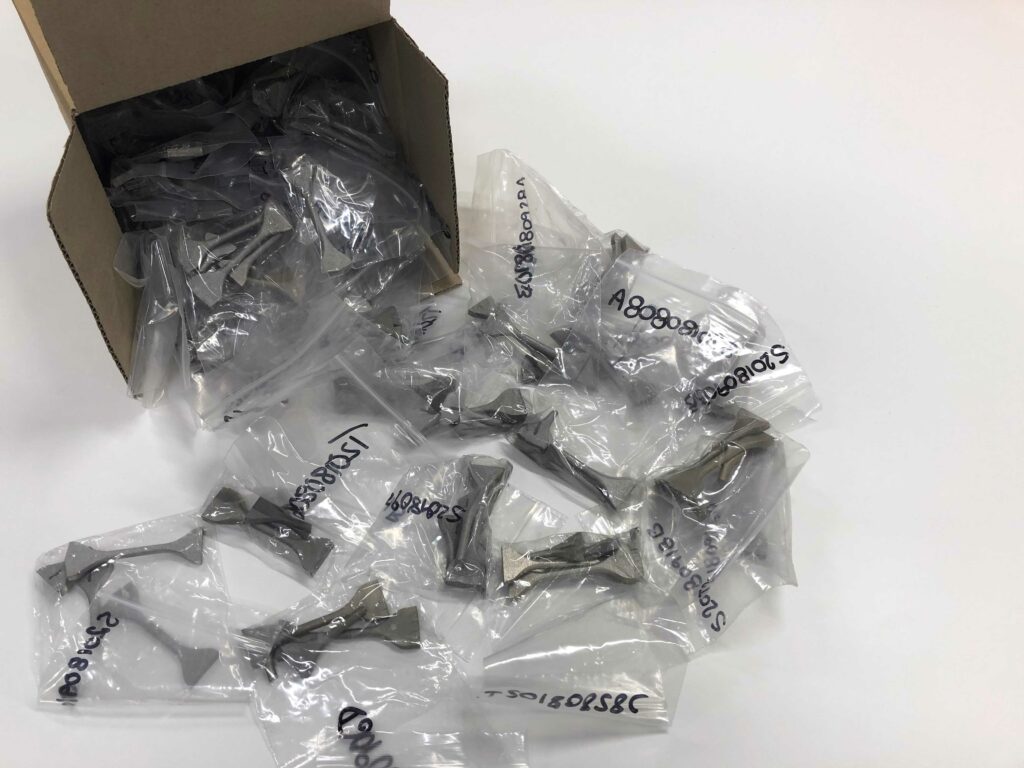One of the key areas is the growth of metal 3D printing as a manufacturing option; more companies are looking to produce their parts in small and large volumes. We’ve seen a huge rise in new companies experimenting with the technology for their projects, and it is paying off for them.
Research and Development in additive manufacturing
Research and Development (R&D) plays a big part in our strategy and even though we have 10 years’ experience in metal 3D printing, we know there are always things to learn and improvements to be made. Over the last few months we have been working on projects which have looked at heat treatment protocols for a couple of different materials, changes to powder handling and laser parameters for thin wall and lattice structures.
Quality Control
Since RAM3D’s inception, we have been making and testing tensile bars with every build. Tensile testing or tension testing is the most fundamental type of mechanical testing you can perform on material. To perform the test, we print a number of bars with every build and the tensile tester pulls the bars until the material breaks, calculating the load required.
This has enabled us to track any fluctuations (big or small) in each build process. From this we can instantly see the effects of the development we do and can track the effect over long periods of time and a variety of commercial builds. Using these procedures, we can see that our latest R&D is having a positive impact on the targeted areas.
We’ve learnt that without the right kind of monitoring, you could think you are producing good parts because you are following the machine manufacturer’s recommendations and using a repeatable process, however, the outcomes may not be consistent. Our monitoring, which we believe is unique in the world for the duration of comparable data, allows us to keep our process perfected and guides our R&D.


